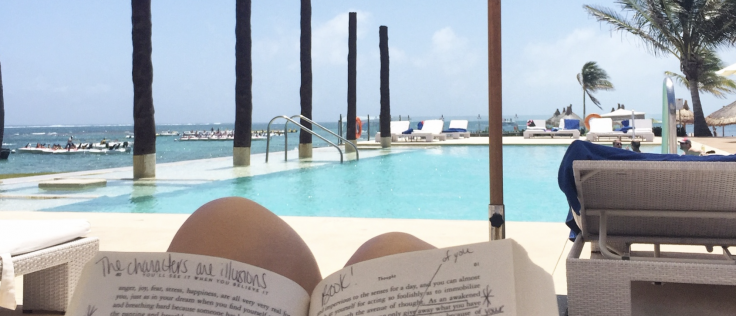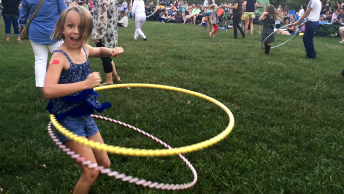The notion of “living in the present moment” is all the rage. Articles, books, workshops, retreats, conferences, and talk show segments all talk about what it means to be mindful. Yet nobody really explains how to do it!
I’ve read countless books, attended numerous workshops, and tuned into hundreds of talk shows and podcasts on this topic. Here’s what I’ve learned:
Being mindful isn’t about having a full mind, but an empty one. I think the practice should be called “emptymindedness,” but let’s not argue with what is.
Anything you can do to empty your mind will positively affect your mood, health, well-being, and the frequency with which you yell at your children. That means choosing not to dwell on everything that happened yesterday, as well as what might happen tomorrow.
But how the hell do you do that?
It’s simple. The end goal of mindfulness is inner peace: serenity and solitude inside your heart and mind, regardless of what’s going on in the world around you. And in case you’re wondering, it is possible to cultivate calm while coping with the chaos of raising children.
Here’s what will prevent you from achieving that goal: regretting your college degree, feeling sorry for what you did or didn’t say to your mother-in-law last night, kicking yourself for not helping your daughter study for her spelling test, worrying about next week’s math test, and fretting over when you’re going to get your next promotion/salary increase/fancy new title at work.
What do all of those scenarios have in common? None of them are happening right now.
The key to living in the present moment is to live in the present moment.
Here’s a stunning example of exactly how to do this, brought to you by mindfulness guru, Eckhart Tolle, in his book The Power of Now.
Think about a problem you’re dealing with right now. If you’re like most human beings, you can probably think of a half-dozen in six seconds. But what’s fascinating about each and every one of your problems is that I’ll bet not one is happening right now, at this exact moment—they’re all based in the past or in the future.
Let’s look at a few examples.
If right now, one of your problems is that you’re stressed about a presentation you have to give tomorrow, that problem is based in the future. If one of your problems is that you feel guilty about snapping at your husband this morning, that problem is in the past.
Chances are, you likely find it hard to name a problem that you have at this moment, because you don’t have any. Most problems that you can name are:
- What you shoulda/coulda/woulda done better yesterday
- What you need/must/wish you could do tomorrow.
Try it. Try to name one problem that you have at this exact moment that’s not based in the past or the future.
Chaos and turmoil exist in your mind because you’re thinking about, and often living in, the past or future. If you live in the present moment, you can live with a calmer mind and, therefore, more inner peace.
Here’s how to do it:
- Adopt a mantra. When you find yourself racing into the future (What the hell am I going to make for dinner tonight?) or reliving the past (I cannot believe I called that woman the wrong name today. I’m such an idiot.), start silently repeating the mantra, “right here, right now” in your mind. You’re not in your kitchen yet, and you’re not standing in front of your former colleague, frantically searching for a name tag. You are right here, right now. Take a couple deep breaths and repeat the mantra. Inhale: “Right Here.” Exhale: “Right now.” Do it until you arrive back in the present.
- Embrace a metaphor. To maintain calm in the chaos, it’s often helpful to think of yourself as the deepest part of the ocean. The wind and weather might cause turmoil on the surface, but 99% of the ocean is beneath the part that’s getting roughed up. Storms (the chaos in your life) will come and go, but the depths beneath the surface stay smooth. It’s always calm, always quiet, always stable. Let the winds blow — you cannot stop them — but dive down and remember to dwell below the surface.
- Get some guidance. Meditation can help you train your mind to stay in the present. If the thought of sitting on a cushion in the corner and staring out the window scares you, get a coach. Download the app Headspace or complete a 21-day meditation challenge with Deepak Chopra. Like a lot of skills, there’s a learning curve for meditation, but you don’t have to go it alone.
- Pick up a book. The Power of Now by Eckhart Tolle is the bible of mindfulness. It changed my life every which way to Sunday. It’s provocative and powerful. And deep. If you’re looking for a lighter read, check out 10% Happier by Dan Harris, an ABC news anchor whose spiritual journey was inspired by a nationally televised panic attack. And if you want to read an amazing transformation by a party girl who became a meditation guru, buy Spirit Junkie by Gabrielle Bernstein pronto. There are a lot of gems packed into that skinny little volume.

You see, mindfulness is a practice you can learn. There are habits you can adopt and behaviors you can change. There are simple things you can start doing right now to give yourself peace of mind, to calm the chaos.






